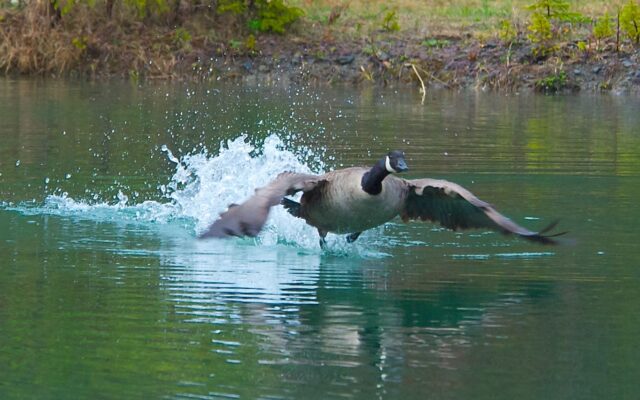
Four things you need to know before you stock your pond with fish
By Julia Bayly, Bangor Daily News Staff
For some people, a pond is not fully a pond unless it has fish in it. But what if the fish aren’t already there? Then it will need to be stocked and spring time is the optimal time to do it.
Fish for stocking in ponds come from fish hatcheries. But before you go ordering up some, here’s what you need to know about properly stocking your private pond with fish.
Step 1: Get the permit
To start you need to obtain a permit from the Maine Department of Inland Fisheries and Wildlife. The permit process is set up to make sure the fish being stocked will not conflict with existing natural resources, according to Francis Brautigam, director of fisheries and hatcheries with Maine DIF&W.
The permit application costs $10 and can be found on the Maine DIF&W website. When you fill out the permit, you’ll need to provide a detailed location of the pond including map coordinates and directions on how to get to it, if it has an inlet or an outlet and if so, into where it drains and what kind of fish you want to stock.
Officials want to be confident that your pond is as escape-proof as possible so any stocked fish can’t swim out of your pond to mingle with wild species.
“We are very fortunate in Maine that we have a relatively low prevalence of invasive aquatic species,” Brautigam said. “When you leave Maine and go south it’s worse and there are a whole suite of fish and pathogens out there we don’t want here.”
Before you fill out your permit, you may want to check If your pond is near one of the state’s 580 designated heritage fish waterways. Depending how close you are, there is a good chance your permit application will be denied, Brautigam said. Those waters support native fish species and he said his department will not run the risk of a non-native fish escaping a pond into those waters.
Step 2: What fish are right for you?
The kind of fish you select for your pond depends on why you want to stock the pond, Brautigam said.
Some people want fish on their own property for eating or to have their own private pond for catch and release fishing. If that sounds like you, you are going to probably want a species of trout or smelt. Trout or smelt are also good fish to stock if you want to control the leech population in your pond as those fish feed on leeches.
Other people just want fish in their pond as part of a wildlife management plan. In that case, minnows and other so-called bait fish are good options. These smaller fish provide food that can attract birds and mammals to your pond.
Step 3: Buy your fish
Once you have your permit — which is good for five years — and know what kind of fish you want, it’s time to contact one of Maine’s four designated fish hatcheries to buy your fish and arrange for delivery.
Up north in Presque Isle, Micmac Farms raises and sells brook trout; Harmon Brook Farm in Canaan raises and sells bait fish and smelt; at Shy Beaver Hatchery in West Buxton you can get brook trout, brown trout and rainbow trout; and Spectrum Trout in South Paris raises and sells rainbow trout. All four operate according to strict guidelines which include required testing of the fish and facilities for pathogens or invasive species.
Another way to purchase fish for your pond is to check if your local soil and water conservation district is participating in one of the annual fish sales around the state.
Step 4: How many fish to buy
Your pond can only accommodate so many fish. Too many fish leads to overcrowding and that is not good for your pond or for the fish. It can also overwhelm the pond’s natural filtration capacity and create a buildup of toxins and nitrates. Plus, too many fish will deplete the available oxygen and that can lead to algae blooms.
Determining how many fish can safely live in your pond requires a bit of math. A basic rule of thumb is to have no more than one 6-inch fish for every 100 gallons of water. If you are thinking of getting the smaller minnow fish, you want one 1-inch fish for every 10 gallons of water. Michigan State University Extension lists several formulae online for calculating the amount of water in a pond.
It’s also important to make sure your pond is cold enough to support your fish. This means water temperatures should never exceed 68 degrees Fahrenheit. You can help keep things cool by adding large rocks to your pond that create shady nooks of cool water at the pond’s bottom. Planting trees around the pond to provide shade can help as well.
“Not every pond can support trout,” Brautigam said. “There are lots of factors in play.”
One thing to keep in mind is once you stock your pond, there’s a very good chance you are going to have competition for those fish from predators. That’s fine if your point was attracting wildlife. But if you are stocking your pond with trout you intend to catch and eat, remember that to a hungry otter, mink, heron or loon, your freshly stocked pond can look like an all-you-can-eat buffet. So get ready to share.